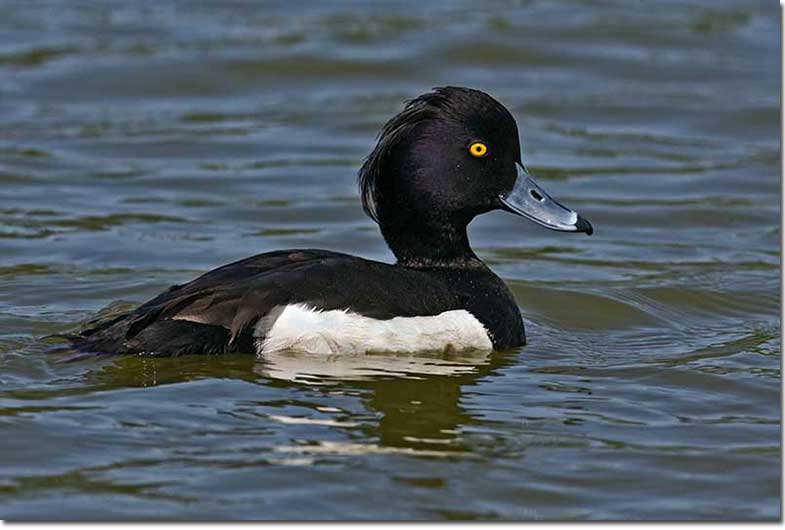
The Tufted Duck (Aythya fuligula) is a rare winter visitor to the western coast of the United States and northeastern coast of the U.S. They’re similar to the Greater and Lesser Scaups and Ring-necked Ducks and sometimes even interbreed with them. Here is how to identify a Tufted Duck and how to recognize its hybrids.
All photographs © Alan Wilson.
Tufted Duck identification
The Tufted Duck is a migratory bird that breeds across temperate and northern Eurasia. Their preferred breeding habitats are shallow lakes that have thick vegetation that offers cover, protection, and areas for perching. In the winter season, it can be found along the coasts of the United States and Canada in larger bodies of open water, including lakes, ponds, marshes, and estuaries.
These diving ducks are on the smaller side with their length ranging between 16-18 inches and wingspan between 25.5-28.5 inches. They are rather distinctive looking.
Males in their breeding plumage are generally black with white flanks and underbellies, yellow eyes, and bluish-grayish bills. They have a long black tuft on the back of their heads, hence the name.
Females are dark brown, have paler flanks, white underbellies, and their brown crest is less pronounced or not even noticeable. Nonbreeding males and juveniles are less vibrant, brownish, and have a less noticeable or no tuft at all, resembling the adult females.
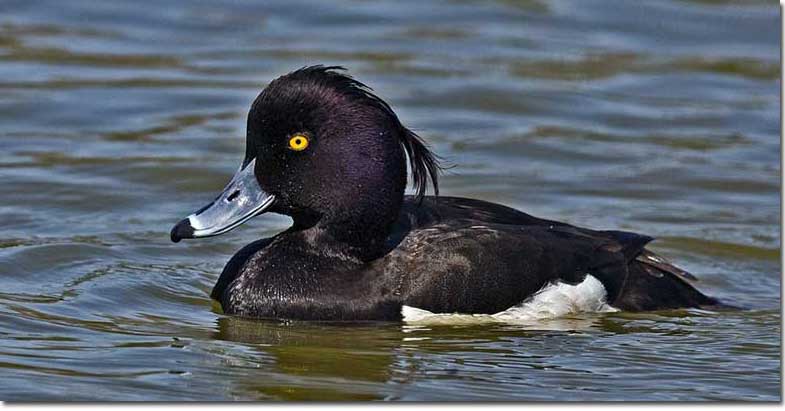
Tufted Ducks are social during migration and the non-breeding season, gathering in groups on bodies of water and foraging together.
However, during the breeding season they are territorial and defensive, attacking predators and other members of their species that intrude.
Males are usually silent except during the mating season when they give whistles. Females are noisier and give a growling karr call while in flight.
Tufted Ducks are omnivorous and consume most of their food underwater unless the prey is large. They have a unique diving technique where they launch themselves slightly out of the water to dive easier.
Ducklings and juveniles, however, forage on the surface and only dive in very shallow water. As they grow older, their submergence time increases.
Tufted Duck – Similar Species and Hybrids
Tufted Ducks are rather unique looking and have only three species they’re similar to at a first glance. These species are the Greater Scaup, Lesser Scaup, and Ring-necked Duck.
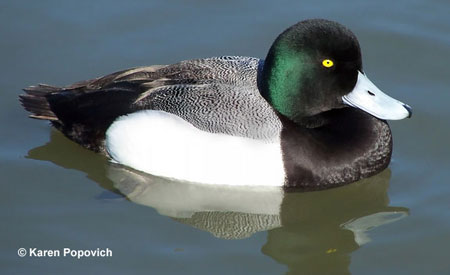
greater scaup
Breeding Greater Scaup males have a gray instead of a fully black back and lack the tuft.
Female Greater Scaups are generally a bit lighter than female Tufted Ducks, they don’t have any kind of crest, and they have a white patch around their bills.
Tufted Ducks are overall darker than Greater Scaups.
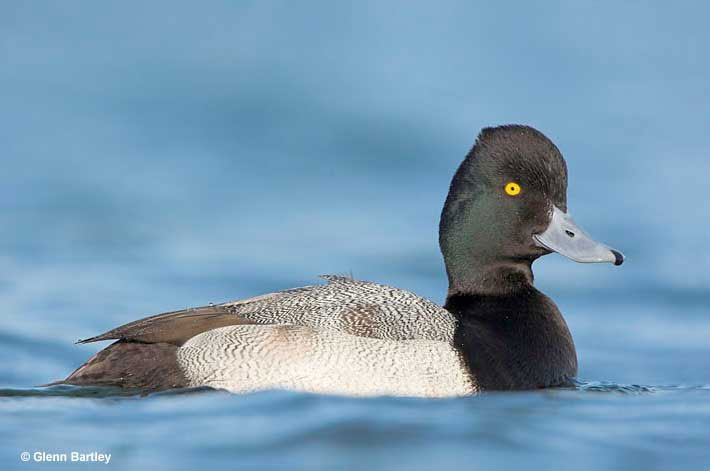
Lesser Scaup
Male Lesser Scaups have a finely barred black-and-white back (which may appear gray at a distance) instead of a black one and have a peaked head but not the long crest.
Females are similarly brown, but female Lesser Scaups have a dark bill and a white patch around it.
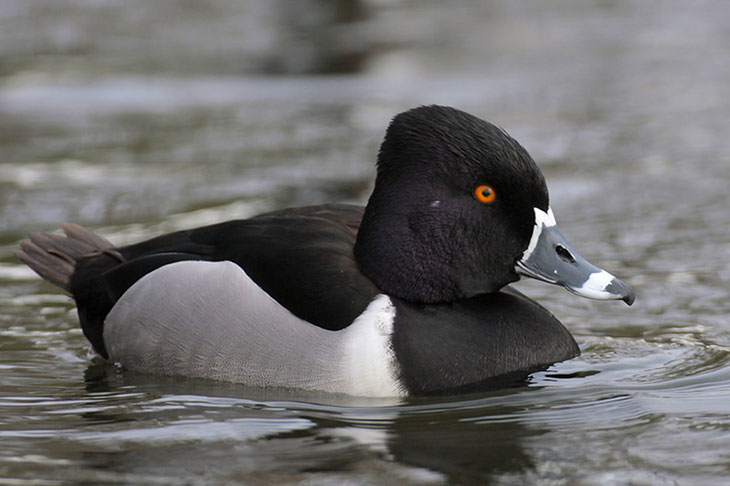
Ring-necked Duck
Breeding male Ring-necked Ducks have gray instead of white sides, gray bills with white bordering and a black tip, and slightly peaked heads but no long crest.
Females of both species are rather similar, but female Ring-necked Ducks have a paler gray head and brown eyes instead of a dark brown head and yellow eyes.
Tufted Ducks are known to interbreed with other species of Aythya, including the Greater Scaup and the Lesser Scaup. The resulting hybrids are a mix of the two, and it may be hard to identify who exactly are the two parents.
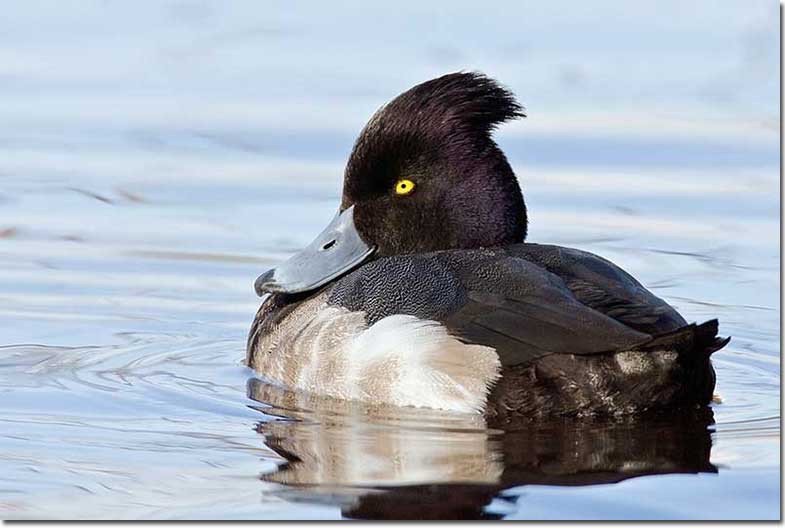
Lesser Scaup x Tufted Duck hybrid.
For example, here we have a male hybrid of a Tufted Duck and possibly a Lesser Scaup. Its back isn’t the solid black of a Tufted Duck, but the barring and coloring is too dark for it to be a pure Lesser Scaup. The crest is shorter than that of a Tufted Ducks but noticeably longer than the peaked head of a Lesser Scaup.


Frank
Friday 19th of May 2023
The bird in the first photo is a hybrid between Lesser Scaup and Tufted Duck.
Sam Crowe
Friday 9th of June 2023
Hi Frank, You are right, we made changes